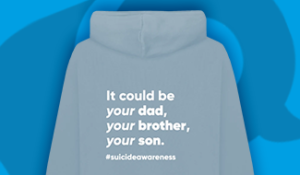Families all over the world separate and for children one home becomes two. Do we underestimate the importance of a successful handover?
To see each parent, children now take part in a transition between two homes, this transition can say one of two things: my parents care more about their conflict than me or my parents care more about my wellbeing than anything else and they are happy for me to enjoy time with each of them. The latter will set them up to be well adjusted and happy adults one day.
Establishing a secure base in a two-home family (whatever form that is in the beginning) will help to bring about a new normal.
Children will be dealing with how they feel about the family separation: they’re faced with ‘what is not there anymore’ – the absence of what was the ‘familiar family’. Establishing a secure base in a two-home family (whatever form that is in the beginning) will help to bring about a new normal. Build strategies and processes where everyone knows what is happening.
The transitions of moving between homes can either be filled with uncertainty, anger, hostility, conflict, heavy silence, a big empty space where the children are made to walk the transition alone or they can be smooth, amiable and concern free? Parents are in charge of the children’s experience: the calm steps of moving between two homes.
The Handovers
When both parents approach the transition with the intension and commitment to make this experience calm and smooth for the children, it brings about a positive mindset and offers structure: a framework of good intension, focus and goodwill. If it’s a ‘roleplay’ of goodwill in the beginning, then so be it. Children will appreciate that parents are making a huge effort for them.
Practicalities – Kids Belongings
If the children have important belongings (their special blanket, toy or X-box game) that they want to take to each home, let them take them. It’s much easier for the children if parents can agree beforehand which items will move back and forth, until they are either redistributed, duplicated or added to. Packing and unpacking basic stuff like toiletries, pj’s and other daily items can really make them feel like a visitor so the sooner these items are in both homes the better. Over time the children will have different things in different homes and will enjoy the variety.
The All-Important Bag
The luggage industry is enormous, people care about the bags they use for holidays, work, sports and weekend trips. Children care too: having the right Handover bags can make all the difference: A bag too small means they have to leave something important behind, having a big suitcase can make it a big ordeal. Depending on the age, let them have some input: what it looks like, does it have wheels? is it a funky backpack? It just needs to be something big enough to hold books, games, trainers, trunks and a few favourites. In the beginning it might be a good idea to pop a checklist into a clear plastic sleeve tapped to the inside: helpful when re-packing.
It’s a given that in the first year items are likely to be forgotten, accepting this rather than blaming the other parent or the child will keep the goodwill going, keep focusing on the learning and getting better at it. When things are important to the children, they tend to get better at reminding the parents to remember things.
Who Packs The Bag?
Children might resist packing/preparing for the handover just as they once resisted brushing their teeth, getting ready for bed or indeed getting up out of bed. Why wouldn’t they? It can be a drag and for some it can feel like they constantly have one foot out the door. Try creating a workable routine and if parents need to do it for them or help, why not? Be patient, practical and persevere. If it’s not being done right, they will soon want to do it themselves.
Arriving At Each Home
When they arrive home, maybe create an atmosphere of simply being at home? Keeping it low-key and maybe having some down time together will allow them time to adjust. If they want a little space, maybe do something nearby and in a short while, things will get back to normal.
Children thrive on routine, so if parents can establish some kind of routine when they come home: maybe a certain meal, a game or something you know they enjoy, it can help with the transition.
Conflict At Handovers
Parental conflict is a challenge for many separating families, we cannot pretend there is a magic wand: bingo, separated and the conflict is gone, no. For some families it’s more helpful to initially use a neutral environment for handovers: dropping off or picking children up from nursery, school, a mutual friend or family member can shelter them from on-going conflict. Everything else above can be done to offer the children the freedom to move between two homes with emotional permission of both parents.
Finally, if there are adult relationship issues getting the way of having a robust co-parenting alliance Parents can look into working together with a family mediator to get there. Know that children will be proud of their parents for showing them how to navigate through difficult times and that as kids, they were free to be just that – kids.
Posted on September 22, 2020














